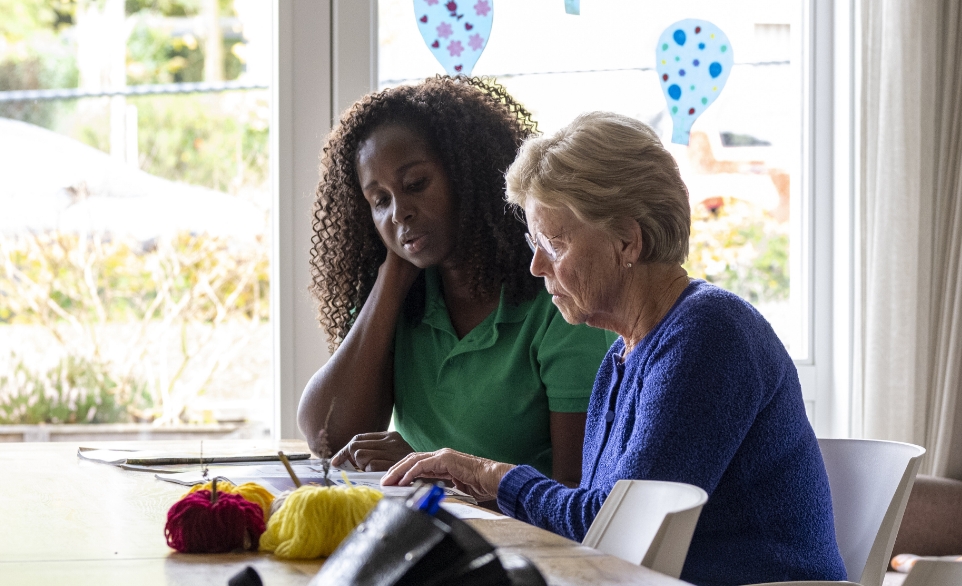
Carer Academy | Written by Jill Hudson
Person-centred care isn’t a buzzword — it’s the difference between ticking a box and changing a life.
We talk a lot about person-centred care in training, policies, and audits.
But what does it actually look like when you’re mid-shift, juggling five visits, running behind, and trying to remember who takes sugar in their tea?
That’s what this blog is about — making person-centred care real, even on busy days.
Because it’s not about doing more.
It’s about doing the same tasks — with a different mindset.
We’ll walk through:
- How to adapt support around real preferences
- How to build trust quickly (yes, it’s possible!)
- Balancing care tasks with meaningful connection
- Plus, a free “Getting to Know You” worksheet to make care more personal from Day 1
What Is Person-Centred Care, Really?
Person-centred care means seeing the person first — not just the task, condition, or time slot.
It’s about:
- Respecting someone’s routine, culture, beliefs, and preferences
- Giving people choices — even in the small stuff
- Focusing on what matters to them, not just what matters for them
You can provide personal care without being person-centred.
But when you combine skill with sensitivity, that’s when care becomes powerful.
How to Adapt Support Around Preferences
You don’t need an hour-long chat to personalise care.
Try these quick switches:
- Instead of: “Time to get up.”
Try: “Would you like to get up now or in 10 minutes?” - Instead of: “I’m here to help with washing.”
Try: “Do you prefer the shower or a quick wash today?” - Instead of: “I’ve made you breakfast.”
Try: “Would you like your tea before or after breakfast?”
Small changes. Massive impact.
When people feel in control, they feel safe.
Building Trust in 10 Minutes or Less
You don’t need hours to build rapport — just presence, tone, and curiosity.
3 Things That Build Trust Quickly:
- Use their name — and pronounce it right
- Match their pace – If they’re quiet and slow, don’t rush. If they like chat, lean in
- Ask a personal question –
“How did you sleep?”
“Remind me, are you a tea or coffee person?”
“Are you watching anything good on telly this week?”
Trust grows when people feel:
- Heard
- Remembered
- Respected
Balancing Tasks with Connection
We know the pressure is real.
>You have tasks. You have a rota. You have another call waiting.
But here’s a truth I’ve learned after visiting hundreds of care teams:
When connection comes first, tasks go smoother.
A two-minute chat can calm anxiety.
A moment of eye contact can lift someone’s confidence.
A smile and a “you’re doing great” can turn a tough morning around.
You’ll still complete your tasks — but you’ll do it with the person, not to them.
Use the “Getting to Know You” Worksheet
The best way to deliver person-centred care is to actually know the person.
Download our free template to help carers quickly learn what matters most — and keep that knowledge front and centre in every visit.
Download the “Getting to Know You” Worksheet
What it includes:
- Daily preferences (tea/coffee, routines, music)
- Cultural/religious needs
- Communication style
- Mobility or sensory support
- What comforts them on a tough day
- What matters most — family, faith, music, humour?
Keep a copy in the care file or your shift notes. Update it regularly.
Person-centred care starts with curiosity.
Quick Examples from Real Life
Scenario 1:
Client: Mrs. Ahmed
Change: You learned she prays before breakfast — so you adjust your routine and give her 5 minutes of quiet before the meal.
Impact: She’s more peaceful, you’re less rushed, and her family feels seen.
Scenario 2:
Client: Mr. Thompson
Change: Instead of washing him in silence, you ask about his Army days — which he loves to talk about.
Impact: He starts smiling during care, opens up more and becomes less resistant to personal care tasks.
Scenario 3:
Client: Ms. Rivera
Change: You learn she hates mornings. You start her visit with soft music and light conversation instead of straight into care.
Impact: Her mood improves, and your day starts better too.
Quick Checklist: Delivering Person-Centred Care in Real Life
| Habit | Why It Matters |
| Use their name and preferences | Shows respect and memory |
| Ask open questions | Builds trust and comfort |
| Give small choices | Empowers the client |
| Match their pace and tone | Reduces anxiety |
| Document their preferences | Makes it easier for others to follow |
| Check in emotionally, not just physically | Makes them feel human, not a task |
Want to Watch It in Action?
Our free Carer Academy Playlist includes:
- Live roleplays showing how person-centred care works on shift
- How to personalise care in 5 minutes or less
- Mistakes to avoid when rushing tasks
- How to build meaningful relationships with clients — even during short visits
Because person-centred care isn’t about having more time — it’s about using the time you have with more care.
Final Thought: Care Is a Relationship, Not a Routine
Anyone can follow a care plan.
But real carers bring the plan to life — by seeing the person behind the need.
You don’t need to be perfect.
You just need to stay curious, kind, and consistent.
Let person-centred care be your default — not an extra.
You’ll see the difference.
And so will the people you care for.
Download the “Getting to Know You” Worksheet
You already care — now let’s make it personal.
With care,
Jill Hudson
Tutor, Carer Academy | Founder, Big Sister













